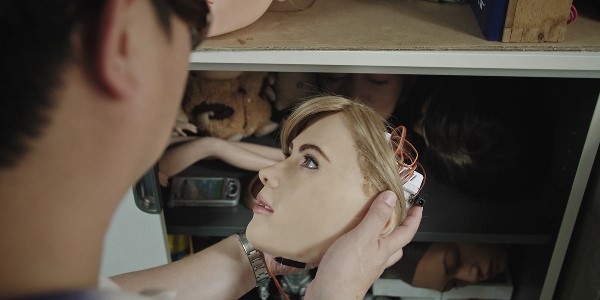A smart, if occasionally chilling documentary, The Truth About Killer Robots kicks off by recounting a death, although whether it’s a murder is left open to interpretation. In 2015, at a Volkswagen factory located in Kassel, Germany, an automated machine unexpectedly lashed out at a worker, crushing his chest and ending his life. A police investigation followed, with the blame for the incident eventually attributed to a malfunctioning circuit, and no party was held liable. Not surprisingly, a local district attorney explains that no robot has ever been charged with a crime under German law.
But if an automated machine can take somebody’s life without accountability, have we failed morally and/or ethically, director Maxim Pozdorovkin asks. From there, the film delves into how automation has frequently led to societal changes both seismic and small, and often with those at the forefront of the shifts failing to consider the ramifications.
According to interviewees, Volkswagen factory robots were for a long time kept in cages, segregated completely from human workers. That changed, however, after German roboticists appeared to teach the concept of safety to automated machines, which led to the belief that it was now impossible for them to harm humans. Pozdorovkin includes footage of researchers training robots by having them repeatedly bump an appendage into a human subject, with close-ups and slow-motion sequences hinting at how much potential damage the machines could do to flesh and bone.
Industrial firms began putting automated machines all over factory floors, and with their expansion came increased roles, albeit to the detriment of workers. Old footage from inside a post office warehouse in China shows many employees sorting parcels based on which province they go out to, but that has since given way to a single person constantly handing off packages to an army of tiny robots. It isn’t so much a symbiotic relationship either, as workers must labor ever faster to keep up with the machines’ relentless production. In addition, the robots serve as overlords in certain factory situations—their roles include monitoring the human capital’s productivity.
One of the film’s clever touches is tracing automation’s path from manufacturing to the service sector—which, as someone points out, is the same migration pattern human workers took when robots first began appearing in factories. Automated machines have already infiltrated working-class bastions such as trucking and taxi operating and are on the precipice of invading white-collar fields (legal work). But as disheartening as the prospect of massive worker displacement is, what the filmmakers never lose sight of are the wider social effects on workers as their jobs become increasingly automated.
Many segments touch on events that viewers may already be familiar with, like a fatal accident in Florida involving Tesla’s self-driving car, which the film argues is a kind of technological advancement that makes people lazier and more complacent. The real question isn’t whether companies, such as Tesla, are able to automate a task, but whether they should. Throughout, there are repeated instances of maverick attitudes toward automation—introduce the robots now and deal with the repercussions later, if ever, seems to be the widespread attitude. Managers talk about the benefits of robots as far as decreasing personnel within earshot of the very employees who would be discarded.
The final third explores how automation has gone in a direction once thought impossible: societal roles requiring empathy. However, Pozdorovkin attributes the aforementioned abandonment of moral responsibility as the reason for this revolution, which could one day soon lead to military robots programmed to kill terrorists based on their faces—a use of technology that could have disastrous consequences if it isn’t foolproof. This section is especially ominous, yet on the whole the film has a sense of wonder. Footage of robots abounds, but not all are framed so as to be threatening. On the contrary, Pozdorovkin seems genuinely fascinated by many of them, especially the humanlike androids encountered in Japan.
During an extended segment in that country, we learn that the Japanese attitude toward robots has largely been influenced by the Shinto concept of animism, which dictates that inanimate objects have souls. As a result, their culture seems more comfortable with the idea of constantly interacting with robots—though there are signs of potential tension as automation is increasingly replacing people. Japan is also the country of origin for Kodomoroid, the first-ever automated newscaster, which also serves as the narrator. Initially, the film uses strategic jump cuts and close-ups of its face to emphasize how non-human it seems to be, but the twist at the end is that a gradual robot takeover may be the last thing we have to fear transpiring, as opposed to the actions of unethical humans.







Leave A Comment